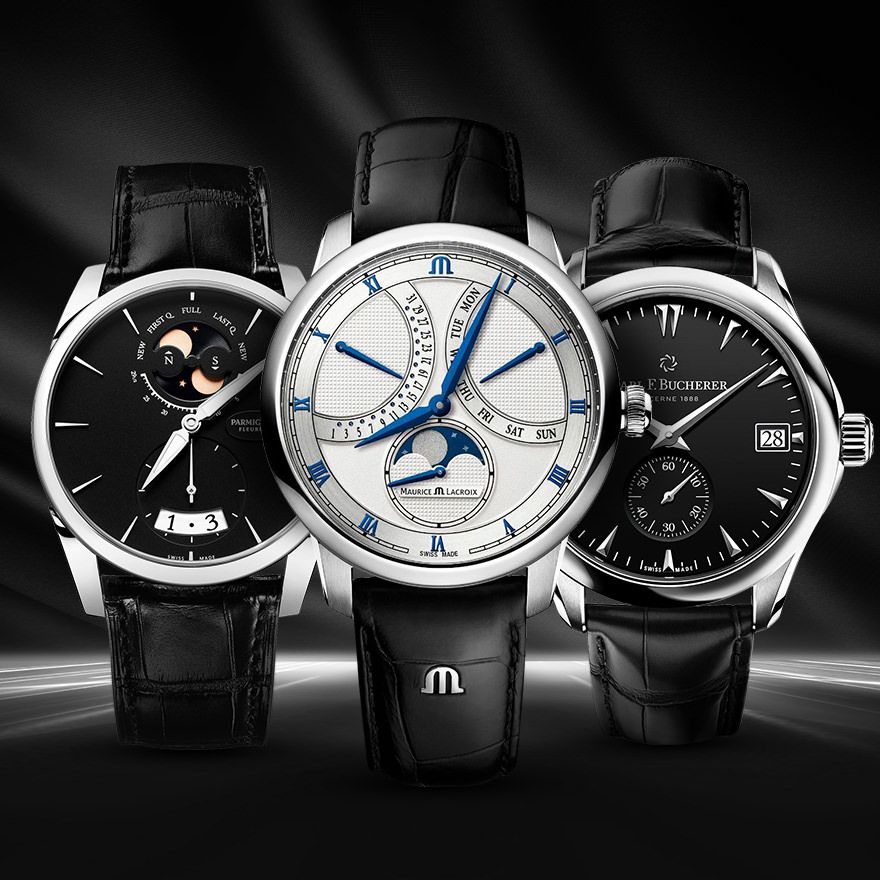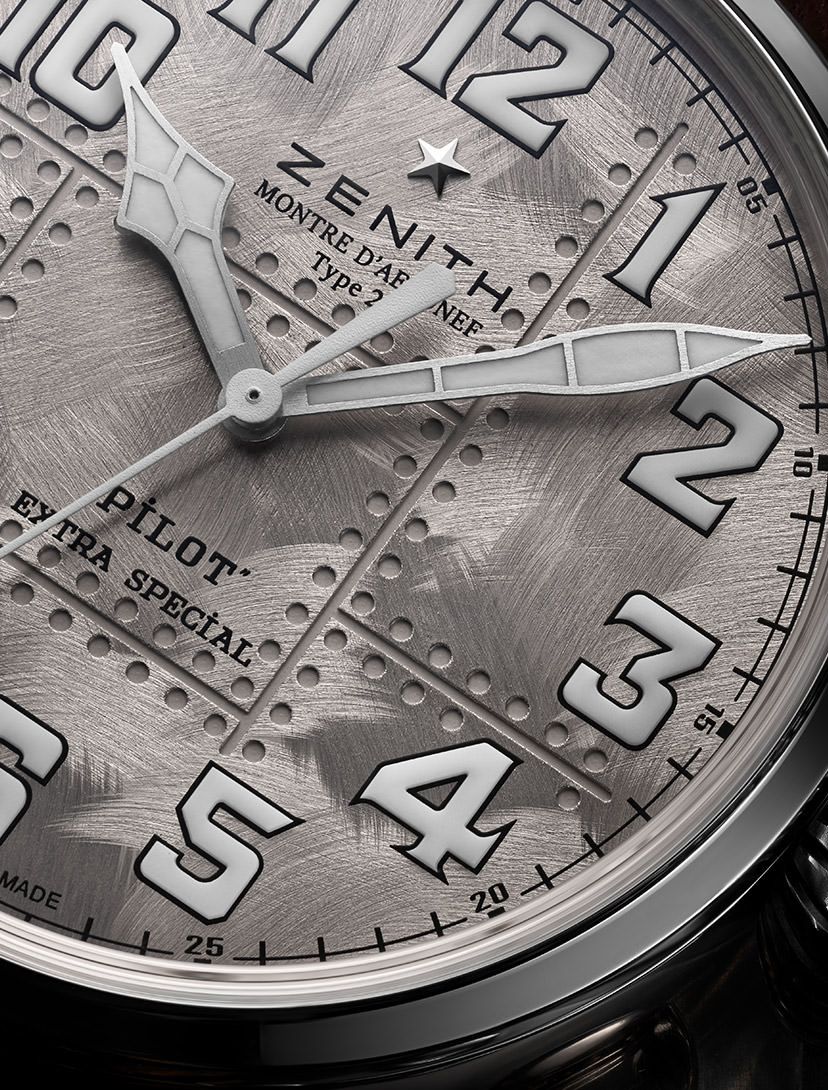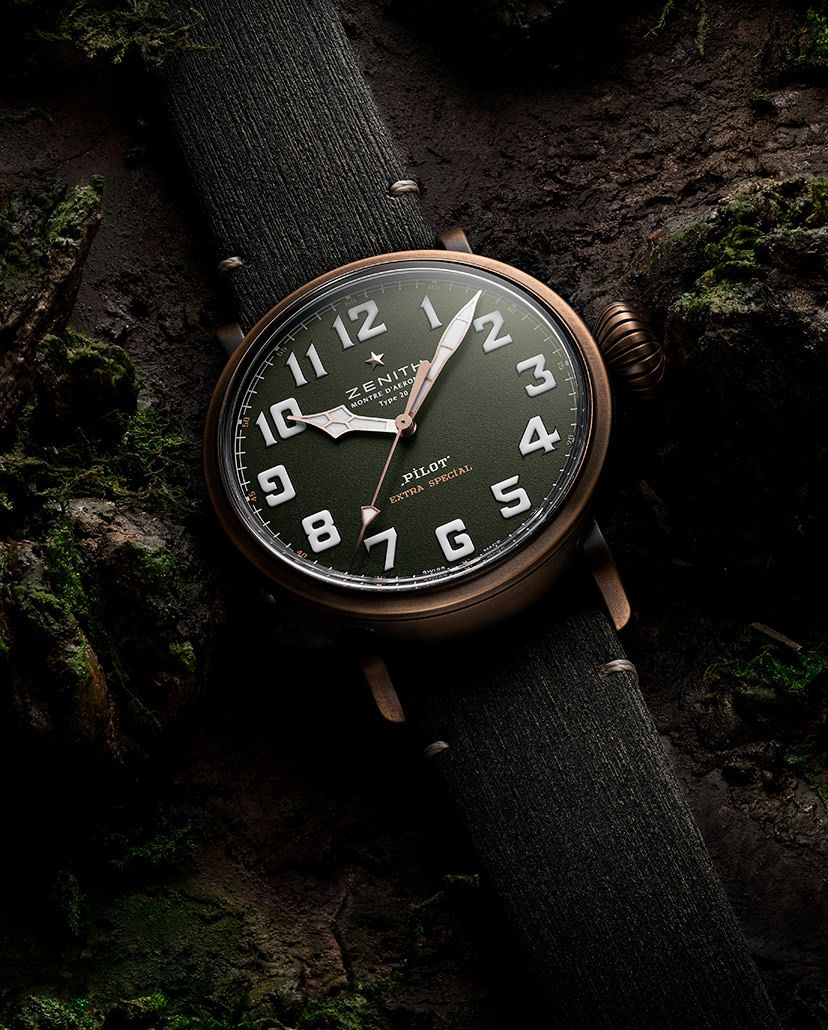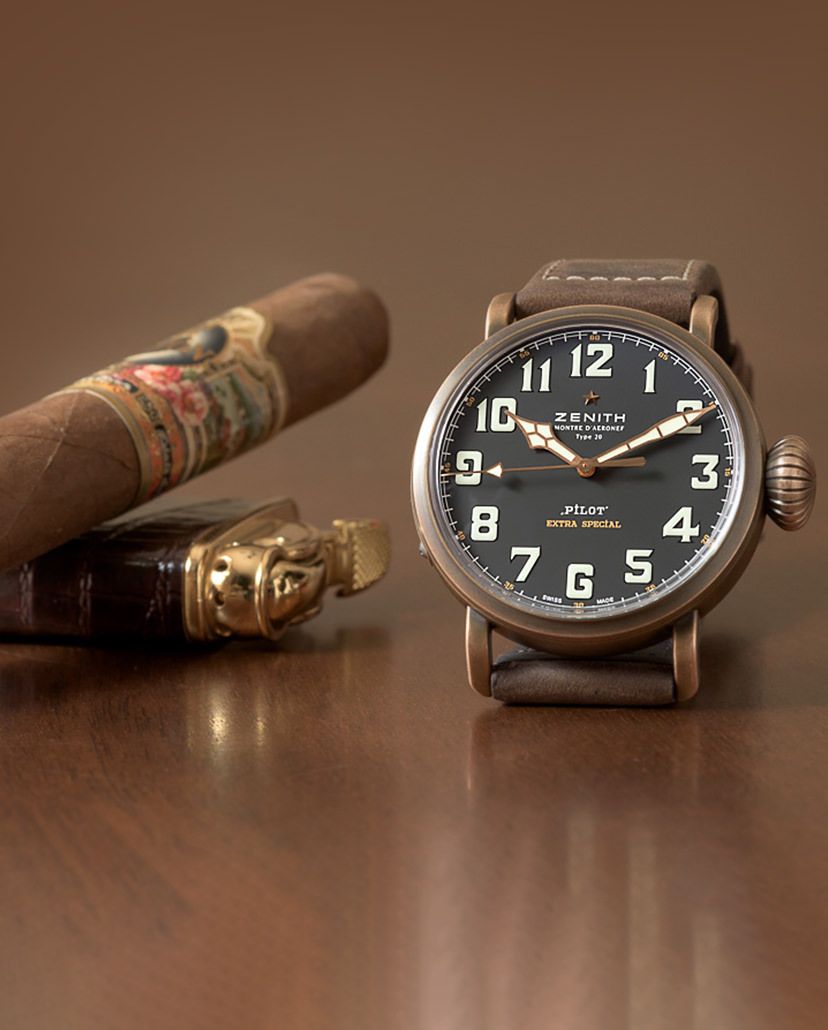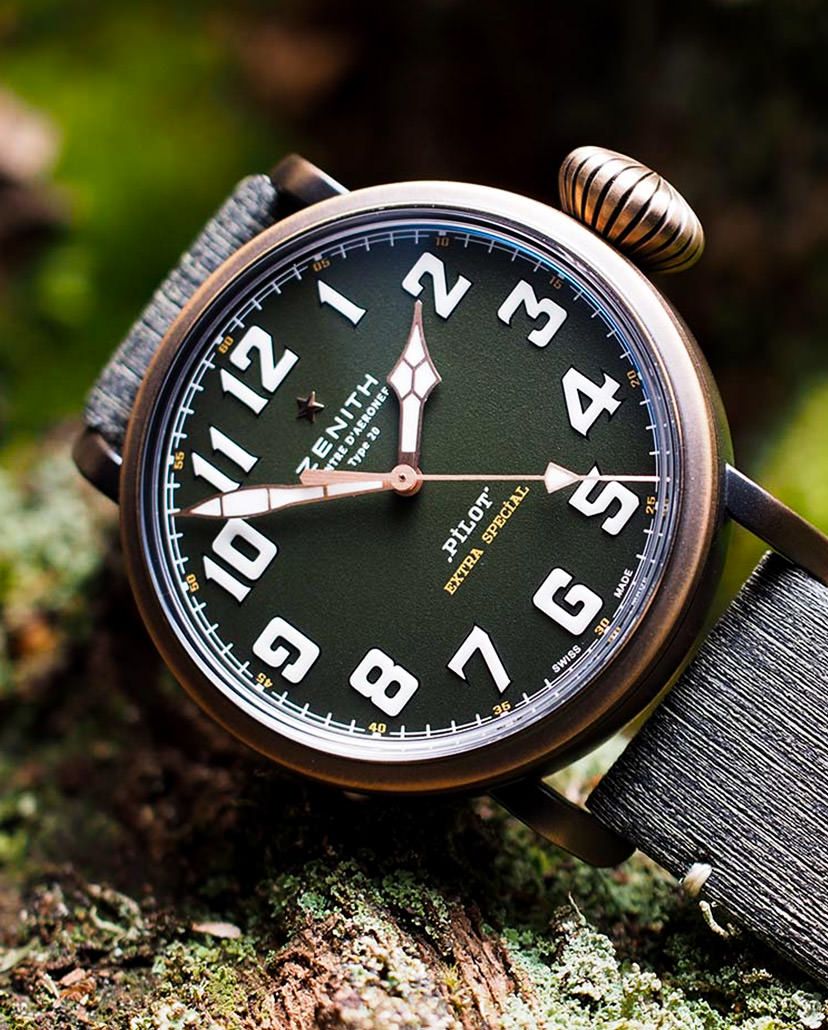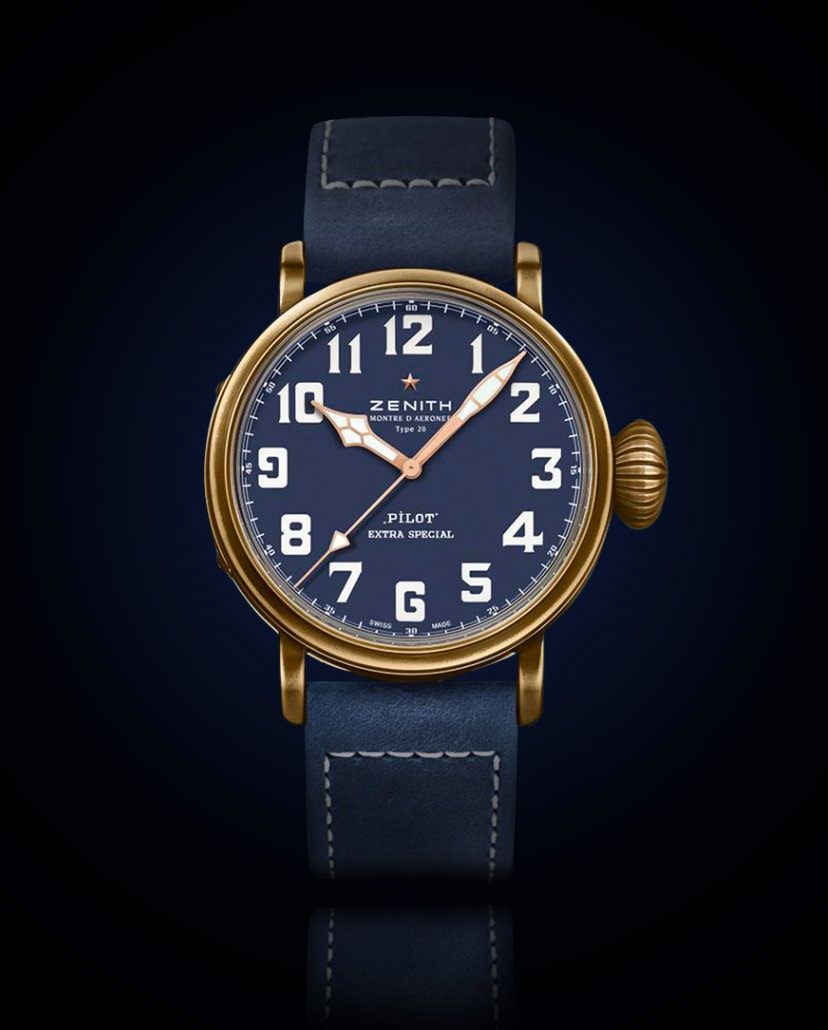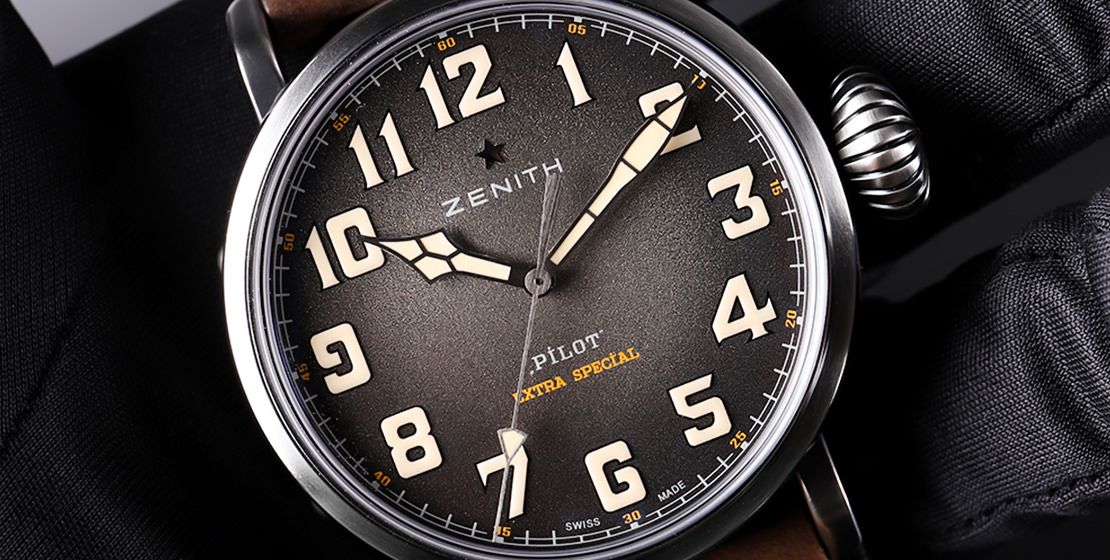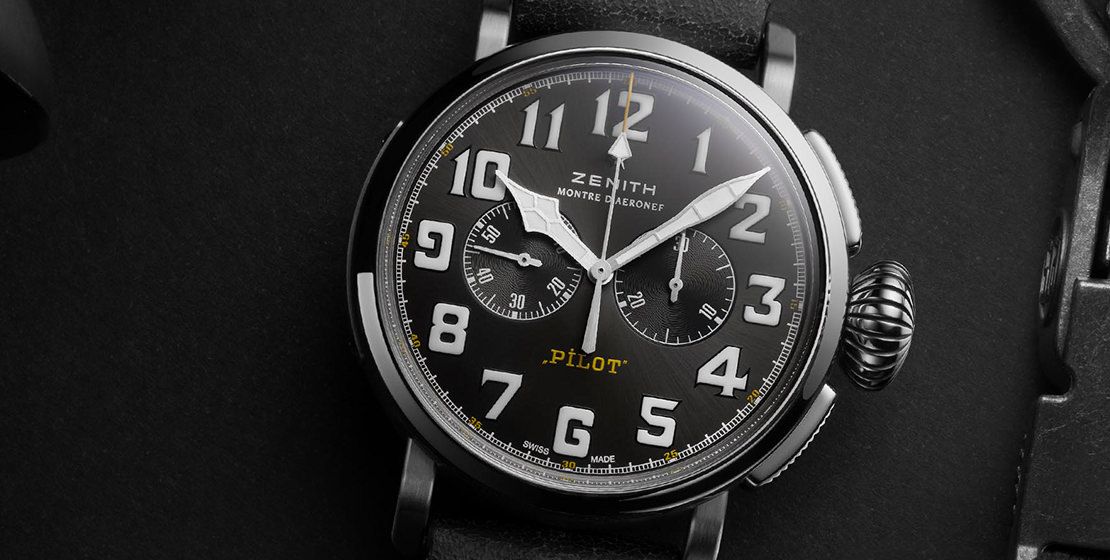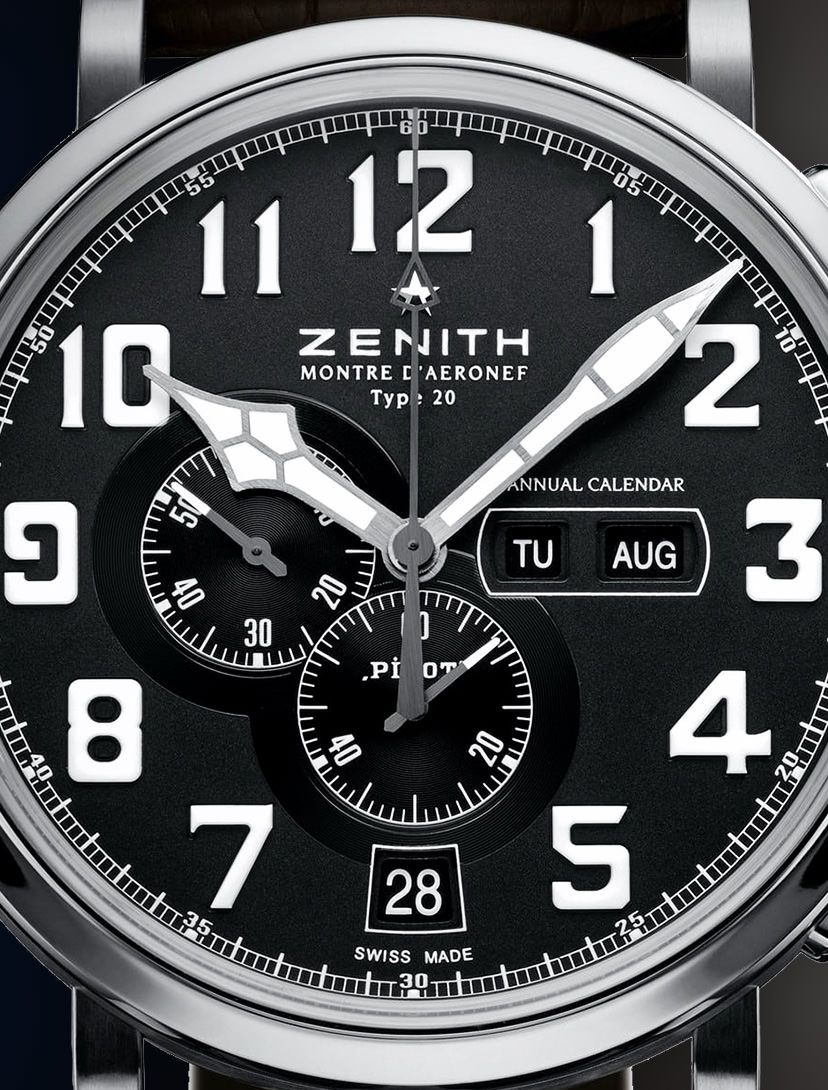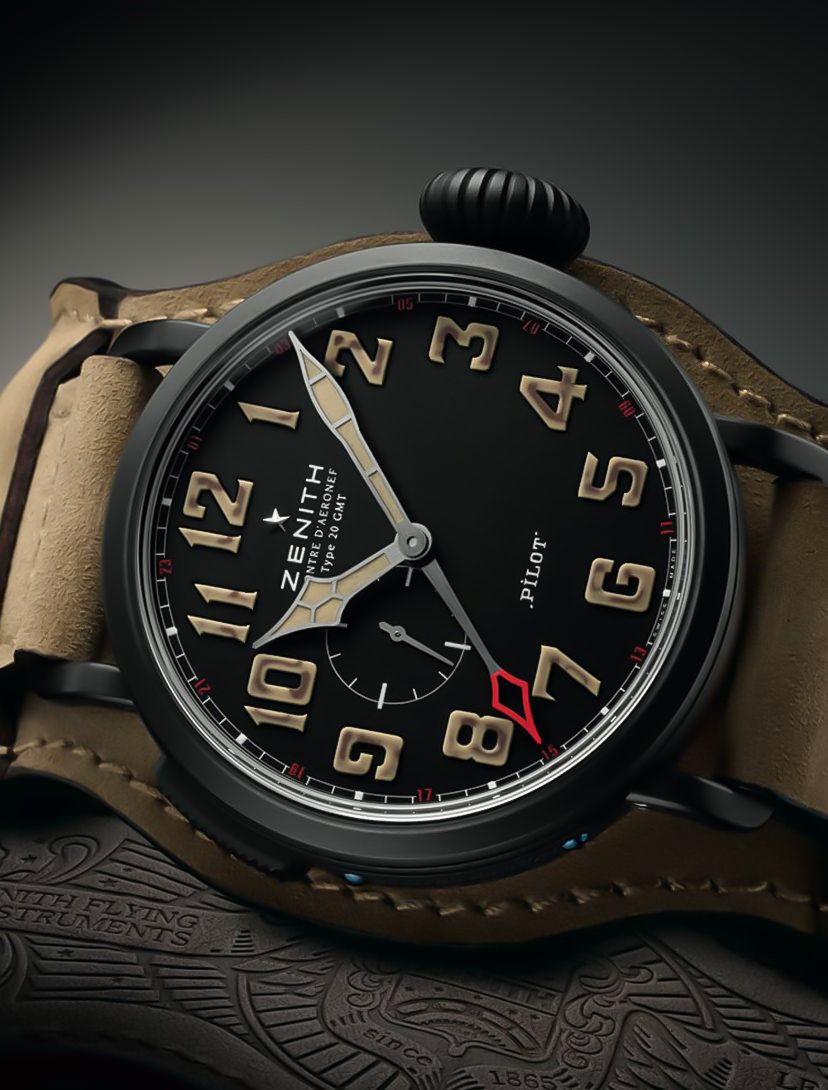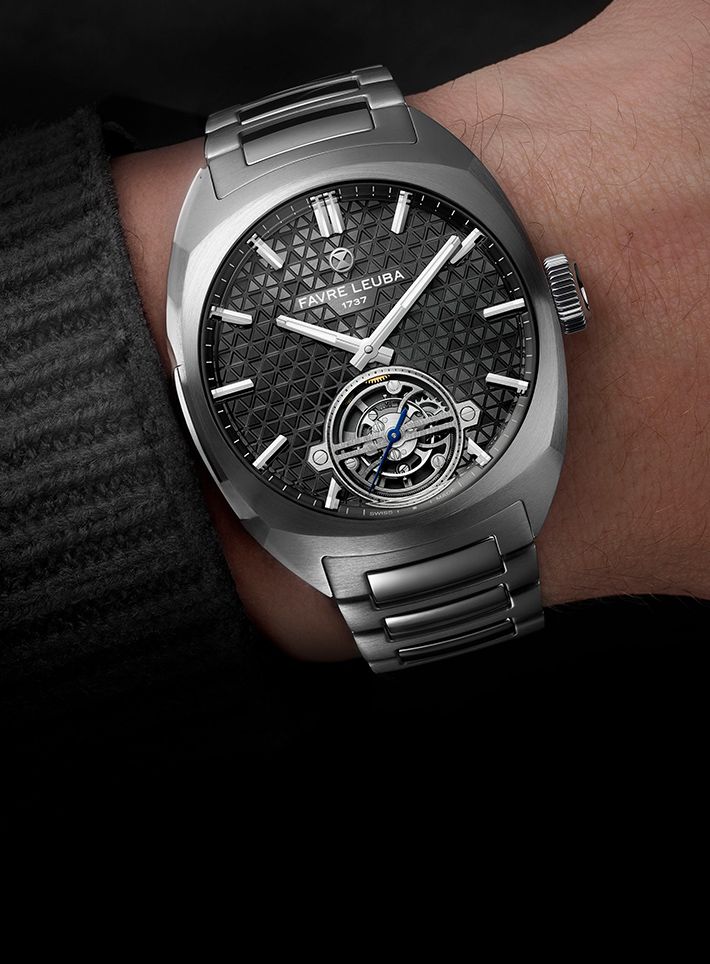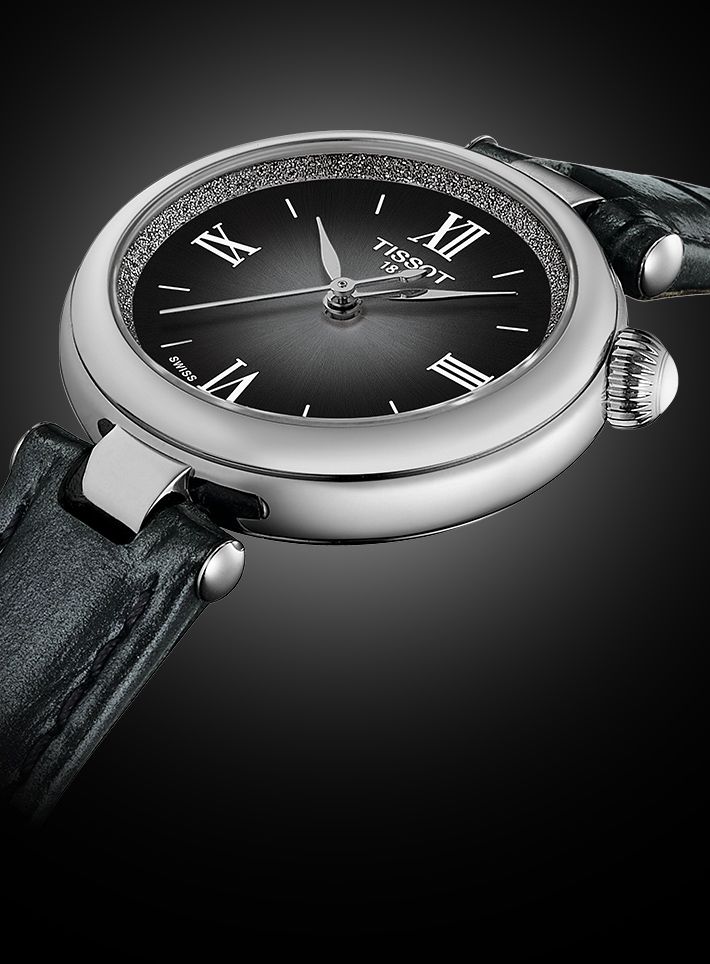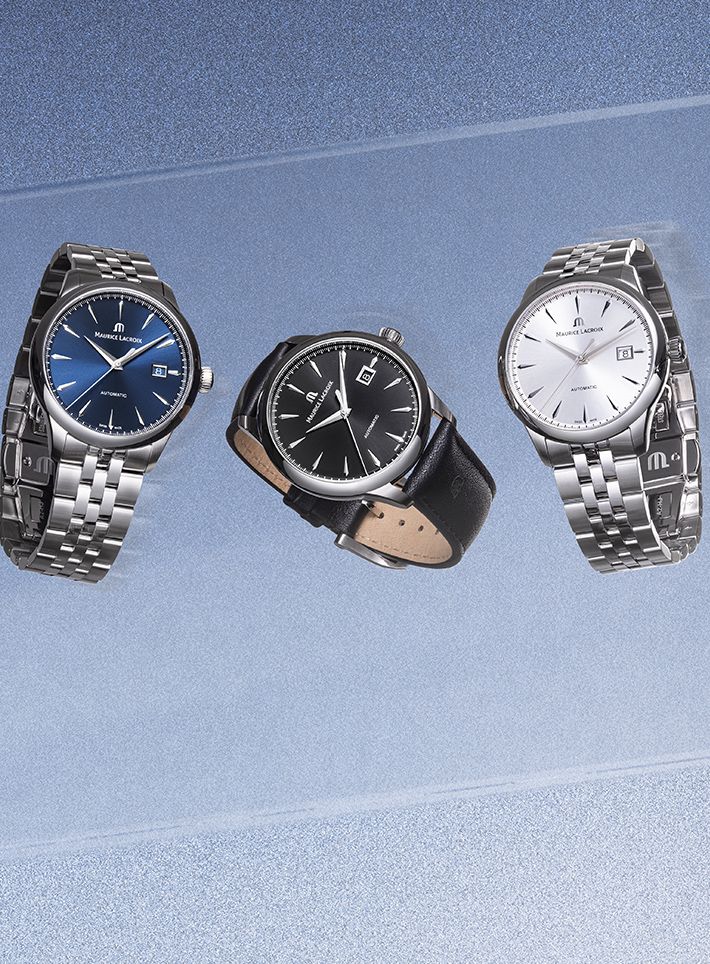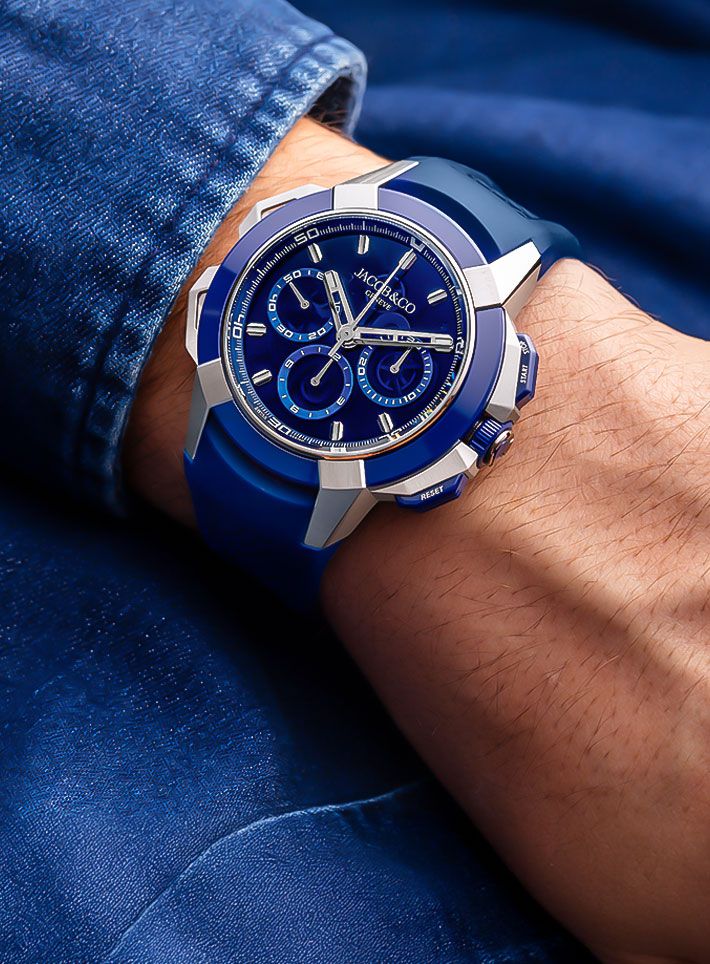FeatureThe Brightest Star In The Sky: The Zenith Pilot Type 20 Collection
Zenith's legacy in aviation is as illustrious as its history in watchmaking itself. Today, we take a look at the Pilot Type 20 collection and why it is regarded as one of the most important aviation watches ever made, along with its relevance and desirability in the modern era
May We Recommend
Zenith’s journey in aviation can be traced back to the field’s infancy, when planes were made with just fabric and wire. In 1909, a famous French aviator, Louis Blériot, became the first man to fly across the English Channel—a mere six years following the first manned flight ever in humankind. Strapped on Blériot’s wrist was a simple Zenith watch, marked ‘Special’ on the dial and complete with a black enamel dial with large and distinctive Arabic numerals, cathedral hands and a sizeable onion-shaped crown. The flight was monumental in the development of early aviation and made Blériot’s name legendary in aviation history. But this also set Zenith’s name in stone and marked the beginning of the brand’s long history as a maker of aviation timepieces and instruments.

The company quickly capitalised on that association and by 1939, Zenith began manufacturing the Type 20 montre d’aéronef (aircraft clock), a hand-wound clock for aircraft cockpits. These were fitted onto the flight’s instrument panel, and found its way into many French aircraft of the time. Most of the wristwatches in Zenith’s Pilot line draw several parallels with these two historically significant timepieces.

However, the aviation bug didn’t last long as Zenith shifted its attention to making racing-oriented chronographs for the most part of the century. It took the brand 70 years to come full circle, and in 2012, Zenith debuted the Pilot Montre d’Aéronef Type 20—an exclusive, limited edition model with only 250 pieces ever produced. The design harked back to the glory days of Zenith’s dominance in flight instruments and featured the trademark, large, luminous numerals and an oversized knurled onion crown that pays homage to the original bezel. It measured a hefty 57.5mm, which was offset by a lightweight titanium case. The reimagined Montre d’Aéronef Type 20 housed a mechanical, hand-wound calibre 5011K, which was visible through the caseback.

Following the limited-edition reissue of the Montre d’Aéronef Type 20, Zenith created an entire collection of watches, all based on iconic design elements of Blériot’s watch and Type 20 clocks. Here, we can find the same cathedral hands, the legible black dial with Arabic numerals in that distinctive font, as well as a case and crown that recall Blériot’s timepiece. And while the design and overall aesthetic of the watch remain fairly consistent, Zenith has experimented with various materials and movements. The Zenith Type 20 collection now includes GMT models, chronographs based on the iconic El Primero movement, three-hand, time-only ‘Extra-Special’ versions, and more. Despite the diversity of the range, all these watches are faithful to the brand’s aviation heritage. A heritage so strong in fact that Zenith holds the trademark for the ‘Pilot’ name on watches, and they’re the only ones who can emblazon the word on the dial—seen across their aviation timepieces.

Material Pleasures
We all know Zenith as a bold company that doesn’t turn away from experimenting and innovating. After all, this is the same brand that creates the Defy and the El Primero movements, which have played a defining role in the history of mechanical watchmaking. The same energy trickles down into the Pilot Type 20 line as well. Most notably, with the Pilot Type 20 Extra Special Silver. Silver is a material hardly heard of in watchmaking. It is soft, discolours easily, and isn’t the easiest to work with. Against all odds, Zenith managed to get rid of the negatives that come with the material and created one of the most remarkable renditions of the Pilot line. The dial, also crafted in silver, is made to resemble the riveted hull of a plane and features a randomised brush finish, evoking the industrial finishing of early planes.
Speaking of unconventional materials, bronze is another favourite of the watchmaker. Given the metal’s tendency to quickly oxidize, bronze is a metal that was never traditionally part of the luxury watch industry. However, the precise reason why the metal was looked down upon is what makes it so desirable today. Bronze cases make for a sizeable part of the Pilot Type 20 collection today and are available with various movements, dial colours and straps. Of course, there’s good, old stainless steel too for the case material. But some of them get a special twist as a DLC-coat called ‘aged steel’. This gives the watch a very grainy look and rugged feel.
You can read more about bronze watches here.
What Makes Them Tick
Ask any watch enthusiast worth their salt what’s special about Zenith and most will likely cite the brand’s ability to make their own movements and excel at it. And that’s exactly true, for the most part (more on this soon). Zenith has kept things simple with the Pilot line. The time-only watches get the in-house ‘Elite’ movement, that beats at 28,800vph and has a power reserve of minimum 50 hours. The chronograph versions get the famed El Primero movement that not only beats at a blazing 36,000vhp but also manages to extract a minimum 50-hour power reserve from it. The rare Pilot Montre d’Aeronef Type 20 Annual Calendar timepiece used the El Primero annual calendar chronograph calibre 4054 movement. This was essentially an El Primero chronograph with a special annual calendar module designed by master watch movement designer Ludwig Oechslin. Together, these two complications made for a very useful and interesting luxury sports watch.
Read all about the significance of the El Primero movement in the history of watchmaking
Now I could go on and on about Zenith’s technical prowess. But around 2014, the brand did something quite strange. In order to bring down the manufacturing cost for an entry-level Pilot Type 20, Zenith decided to use a Swiss Sellita movement. There’s nothing wrong with a Sellita, but this did not sit well with the purists, since Zenith was known as a brand that just didn’t use sourced movements. Just as well, the management quickly realised that all Zenith watches needed to have in-house movements, and the model with the sourced movement didn’t last too long.
To round it all off, I’d say the Zenith Pilot Type 20 is an extraordinary collection of timepieces with an incredibly rich lineage. Just the origin story of the watch plays a pivotal role in what is arguably one of the most important eras in the history of humankind. And strapping it onto your wrist makes you feel like you’re a part of it. Now, the amalgamation between old design cues and modern movements isn’t something new. But only a handful of them can pull it off as well as the Pilot Type 20 does and still manage to stay mainstream among amidst its competition. These big, bold timepieces were once made to conquer the skies, and 111 years later, they still do.
If you want to learn more about aviation-inspired and pilot watches, click here.
